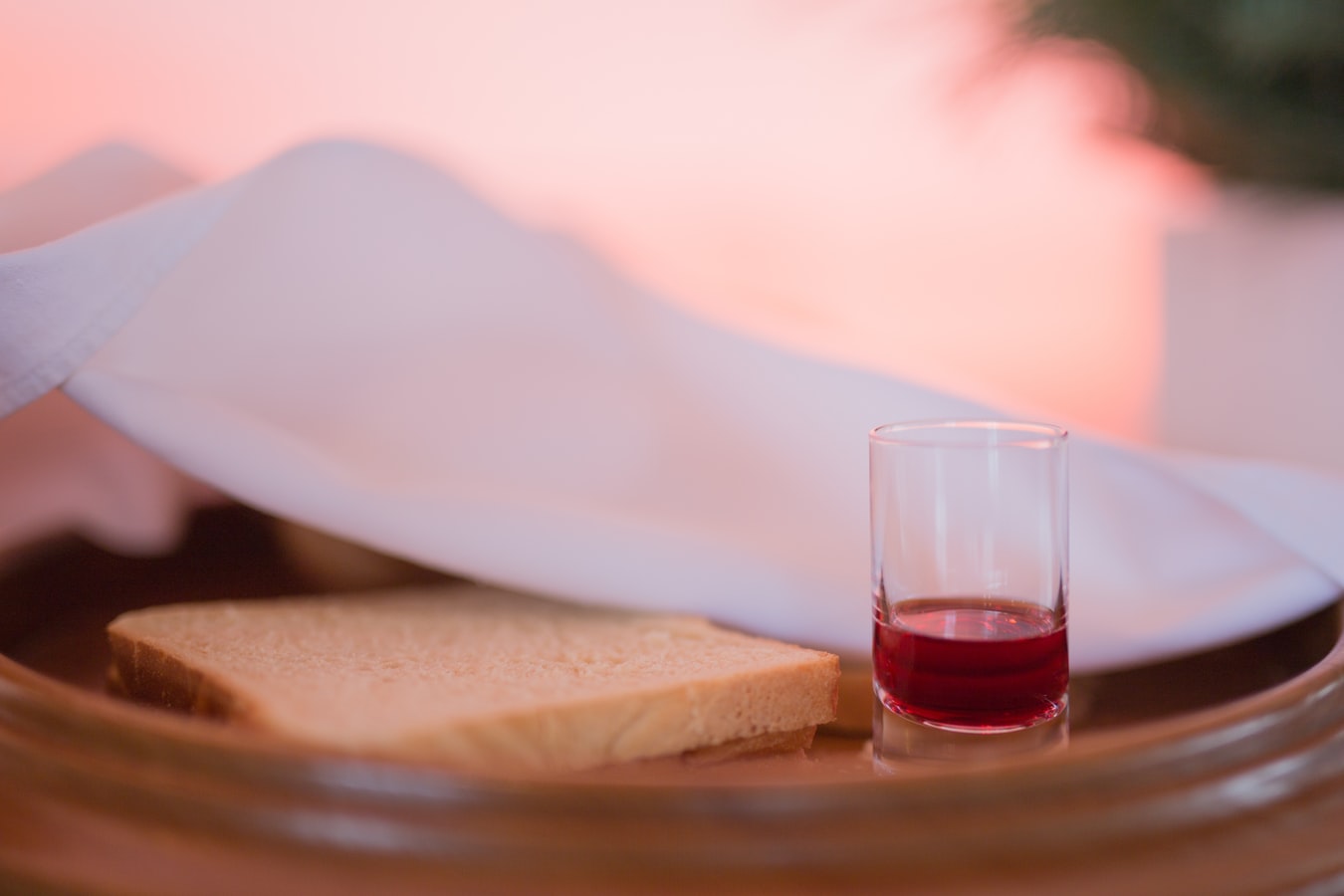What is communion all about?
The most famous story of communion in the Bible is the story of The Last Supper. It was Jesus’ last dinner with His disciples before He was killed. You can read the story (and if you’re going to host communion you’ll definitely want to) in Matthew 26, Luke 22, and Mark 14. It happened as part of the celebration of Passover which was actually a festival that began in the Old Testament period. Jewish people would have celebrated Passover as a way to remember how God brought them out of Egypt and spared their lives in so many ways. The eating of the bread and drinking of the wine that led to what we call communion is still a regular part of celebrating Passover that Jewish people and some Christians celebrate each year.
With Passover as the setting, Jesus took the bread, broke it, yet didn’t follow the typical Passover tradition. He said, “Eat. This is My body.” Then, with the cup of wine, He explained further.
And he took a cup of wine and gave thanks to God for it. He gave it to them and said, “Each of you drink from it, for this is my blood, which confirms the covenant between God and his people. It is poured out as a sacrifice to forgive the sins of many.” Matthew 26:27-28 NLT
In Luke’s Gospel, he included a few more of Jesus’ words from that evening, “do this in remembrance of me.” Those six words, and the Apostle Paul’s reminder in 1 Corinthians 11:23-26, are the motivation for why we take communion together as Jesus followers. Jesus asked us to carry out this simple tradition to remember that He gave His life for our lives. That He was poured out to wash away our sins. Like baptism, communion is a spiritual symbol and reminder of what Jesus has done. But it holds power not only as a symbol, it also reminds us to invite the Holy Spirit to examine our lives and to continue to do His work of washing us by the grace of Jesus.
After taking communion, Jesus and His followers walked to the Mount of Olives where Jesus prayed His famous prayer in the Garden of Gethsemane only hours before He was arrested and eventually died so that we could truly live.
Taking Communion At Home
Jesus and His followers used wine and unleavened bread, but it’s simplest to use grape juice and whatever bread or crackers you have available. If you really want to use unleavened bread, a matzo cracker is a great option. If you can’t find grape juice, another juice will do. What’s important is focusing on the meaning of this spiritual symbol.
Ask one person to pray for the bread and lead the group in this first part of communion. Here’s an example.
Hold the bread, a symbol of Jesus’ body. Jesus asked us to eat this to remember that He gave His body for us. Let’s pray. God, thank You for sending Jesus who not only lived for us, but died for us. The Son of God, who came in the body of a man, gave Himself up so we could live! Thank You that His body was raised back to life. Thank You that because of the grace of Jesus we have real life, and we can live forever in You. Amen. Okay, go ahead and eat the bread.
Next pray for the cup in this second part of communion. Here’s an example.
Hold the cup, a symbol of Jesus’ blood. Jesus asked us to drink this cup to remember that our sins are washed by the powerful new covenant Jesus made possible between us and God. Let’s pray. God, what an incredible picture this is of Your love for us. You allowed Your only Son to literally be poured out so that we could be in a fully restored relationship with You. Thank You, Jesus, for giving your blood. Amen. Go ahead and drink the cup.
Remembering what Jesus did while taking communion can feel like a somber moment, and that’s okay. But don’t forget, this is an incredible reason to celebrate. Ask some people in your group to come ready to share a story of something that Jesus has restored in their life. Encourage your group to not just experience the symbol of communion but to live in its truth. We are set free because Jesus is alive and giving us life to the full.
Reflect and share anything they felt like God might have been helping them to see or remember while they were taking communion.
